Welcome to the magical world of birthstones for June, where three alluring gems have a particular position. The gleaming pearl, representing grace and purity, is one of the traditional birthstones. Alexandrite, a beautiful stone with color-changing characteristics that stands in for flexibility, joins it. We also have Moonstone on the list of contemporary birthstones, which exudes calming energy and magical enchantment. Stay tuned as we explore the fascinating world of these June birthstones in further detail, uncovering their meanings, characteristics, and captivating tales. Keep reading to learn about the hidden treasures contained in these remarkable gems.
June Birthstone: Pearl
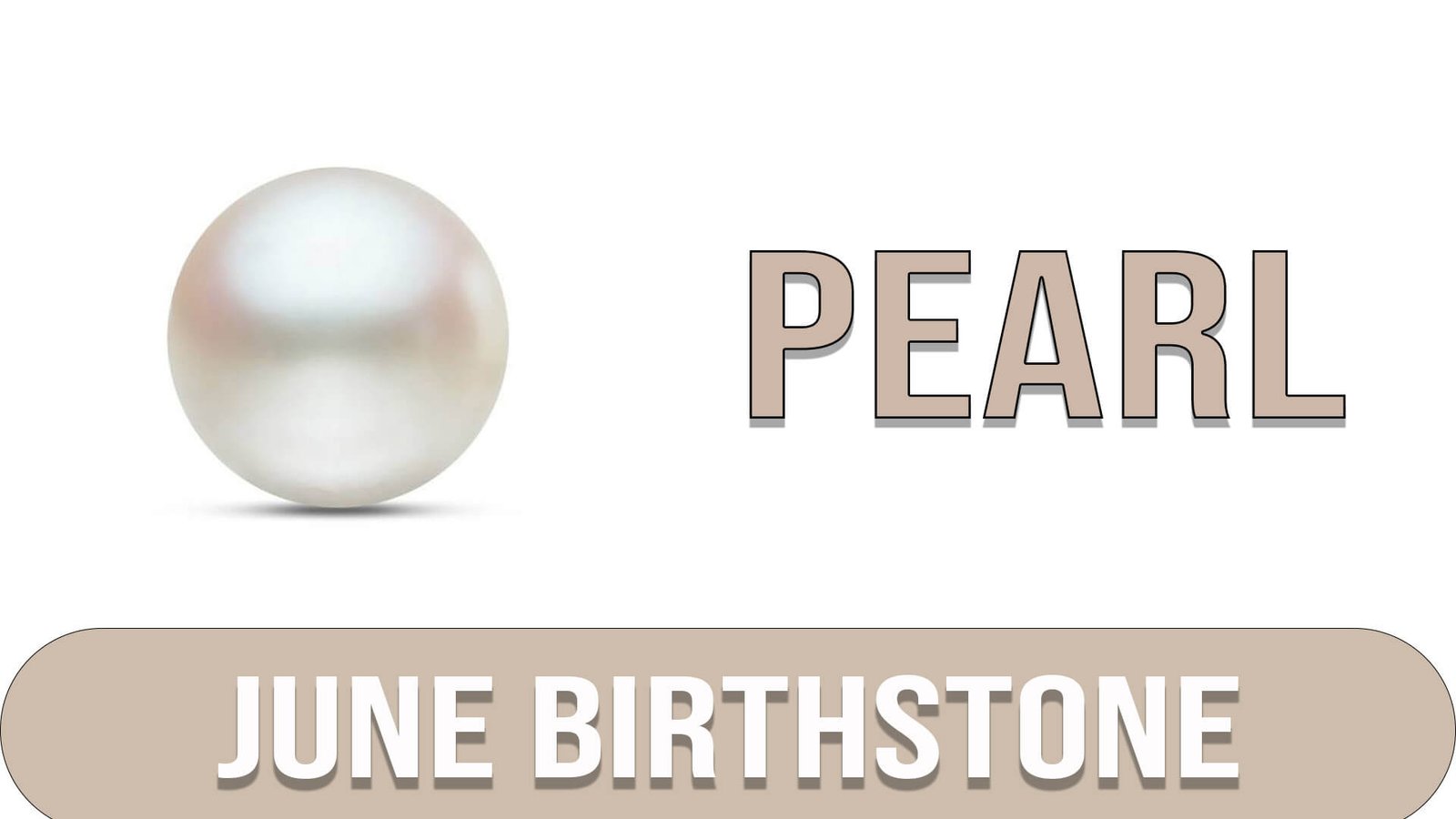
A pearl is a gem that forms naturally in the soft tissue of some mollusks, especially oysters and mussels. It is produced when a parasite or irritant, like a sand grain, penetrates the mollusk and triggers the formation of a nacre. A pearl is created when nacre deposits in successive layers around an irritant over time. Pearls are available in various sizes, shapes, and hues, from traditional white to shades of cream, pink, grey, and black. They are prized for their shiny exterior and represent innocence, sagginess, and feminine elegance. Pearls are cherished and timeless gemstones because they have been highly valued throughout history and are frequently used in jewelry.
History of Pearls
- Pearls have a rich and fascinating history that spans thousands of years.
- The earliest recorded evidence of pearls dates back to around 4200 BC in ancient Mesopotamia (modern-day Iraq), where they were highly valued and considered precious gems.
- In ancient China, People associated pearls with wealth and royalty. Chinese records from the 3rd century AD describe pearls as symbols of perfection, beauty, and harmony.
- The ancient Egyptians treasured pearls and believed they had magical properties. Pearls were often included in jewelry and buried with the deceased to accompany them in the afterlife.
- In ancient Rome, pearls were a symbol of social status and luxury. Julius Caesar famously passed a law restricting the wearing of pearls to the ruling classes.
- During the Middle Ages, pearls were famous among European nobility and the clergy. Europeans often incorporated them into crowns, religious artifacts, and royal jewelry.
- The discovery of pearl-bearing oysters in the Americas, particularly in the Gulf of California and the waters of Central and South America, increased interest in pearls during Spanish colonization.
- The 19th century saw the rise of cultured pearls, thanks to the efforts of Koki Chi Mikimoto and others. Cultured pearls allowed for more accessible and affordable pearl jewelry.
- Pearls became a symbol of elegance and sophistication in the early 20th century, popularized by influential figures such as Coco Chanel, who incorporated them into her designs.
- Today, pearls continue to be cherished and admired for their timeless beauty and remain a classic choice for jewelry, symbolizing purity, femininity, and refinement.
Where is Pearl Found?
Does it sound like the perfect beach getaway? Warm waves, blue skies, and picturesque surroundings. Additionally, it’s a good indicator of where you may typically find these pearl birthstones. Since mollusks that produce pearls cannot survive in contaminated waters, pearl farms are usually found in remote areas, frequently amid stunning landscapes.
Cultured pearls made in saltwater are produced all over the world. Most Akoya cultured pearl farms are located in China and Japan, particularly along the southern shores of the provinces of Guangdong and Guangxi. From the northern coast of Australia, via Indonesia, to the southern coast of Southeast Asia, vast operations are engaged in farming South Sea cultured pearls. Rich black Tahitian pearls are farmed in two different locations: the Gambier Islands and the Tuamotu Archipelago, both of which are a part of French Polynesia. The leading supplier of freshwater-farmed pearls is China.
Meaning and Symbolism of Pearl
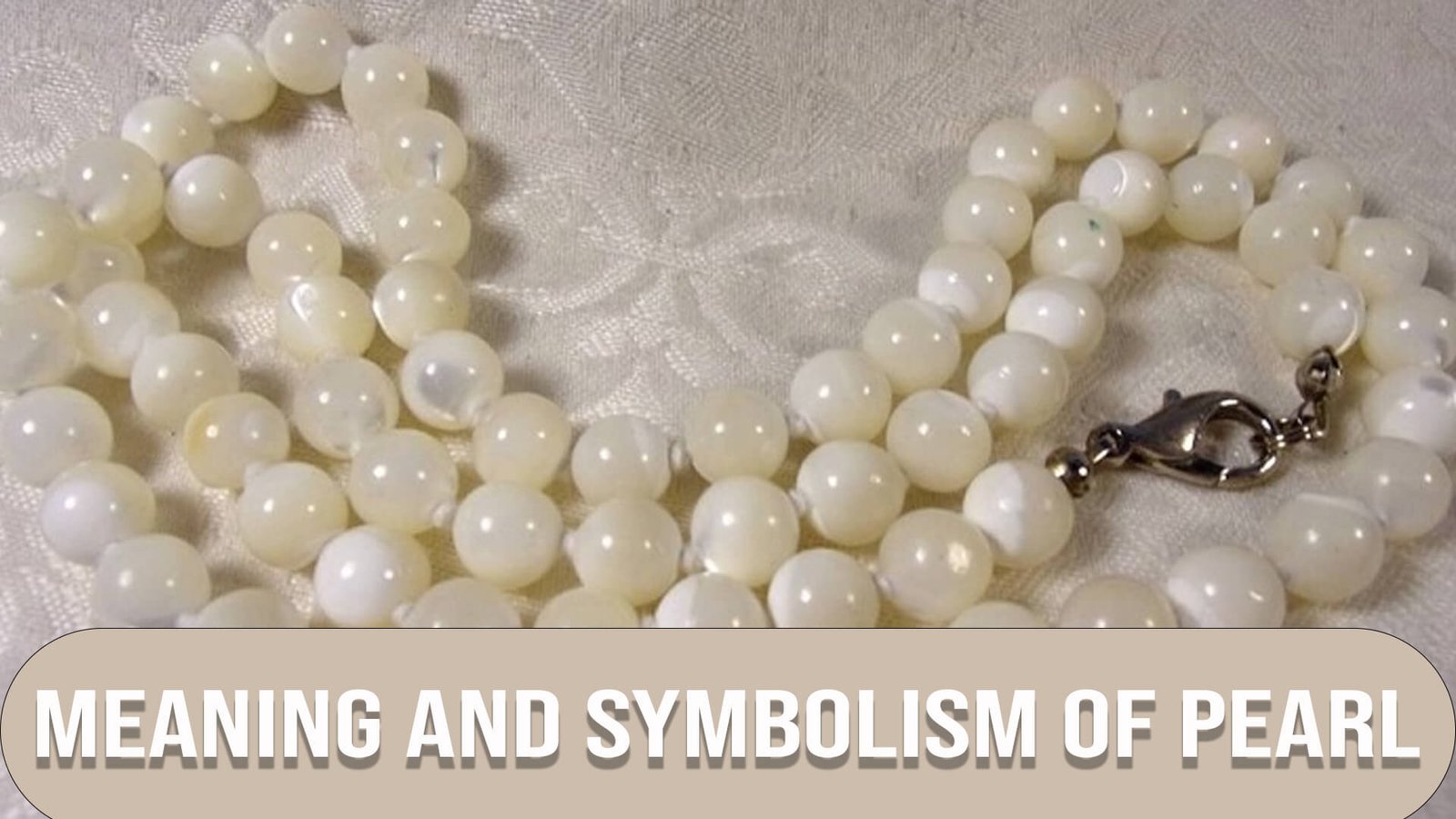
Pearls hold deep meaning and symbolism that have been cherished throughout history. As one of the oldest known gemstones, pearls are associated with purity, innocence, and femininity. Their smooth and lustrous surface has long represented perfection and beauty.
The formation of a pearl begins with an irritant, such as a grain of sand or a parasite, that enters an oyster or mollusk. In response, the mollusk secretes layers of nacre, a crystalline substance, to coat the irritant, eventually forming a pearl. This natural process has given rise to transformation and personal growth symbolism. Pearls are often associated with overcoming adversity and emerging more robust and resilient, symbolizing wisdom and maturity.
Throughout different cultures and traditions, pearls have been revered as a symbol of wealth and luxury. In ancient Rome, pearls were a sign of social status worn to display wealth and power. In many Eastern cultures, pearls are considered sacred and associated with spiritual enlightenment and inner peace.
Pearls are also often associated with love, marriage, and fertility. They are frequently used in bridal jewelry, symbolizing purity and the beginning of a new chapter in life. Pearls promote harmony and balance in relationships and strengthen bonds of love and friendship.
In spirituality, pearls have calm and centering properties. They balance emotions, promote tranquility, and enhance intuition. Pearls connect the wearer with the energy of the sea and the moon, harnessing their calming and healing powers.
In summary, the meaning and symbolism of pearls encompass purity, transformation, wisdom, wealth, love, and spiritual connection. These exquisite gems continue to captivate and inspire, carrying a rich heritage of symbolism and significance.
Properties of Pearl
Pearls’ distinctive physical characteristics add to their eternal appeal. Unlike other gemstones, pearls are organic gems that grow within the soft tissue of mollusks. They have a nacre-covered surface, which is smooth and shiny and gives them their distinctive luster. Round pearls are the most treasured and expensive of all the different types of pearls, which also come in oval and irregular shapes.
They come in a wide range of colors, from traditional white to cream, pink, grey, and black tones. Because of their low Mohs hardness—typically between 2.5 and 4.5—pearls are prone to scratching and require cautious handling. They are lighter than many other jewels due to their specific gravity, which ranges from 2.70 to 2.78.
Color of Pearl
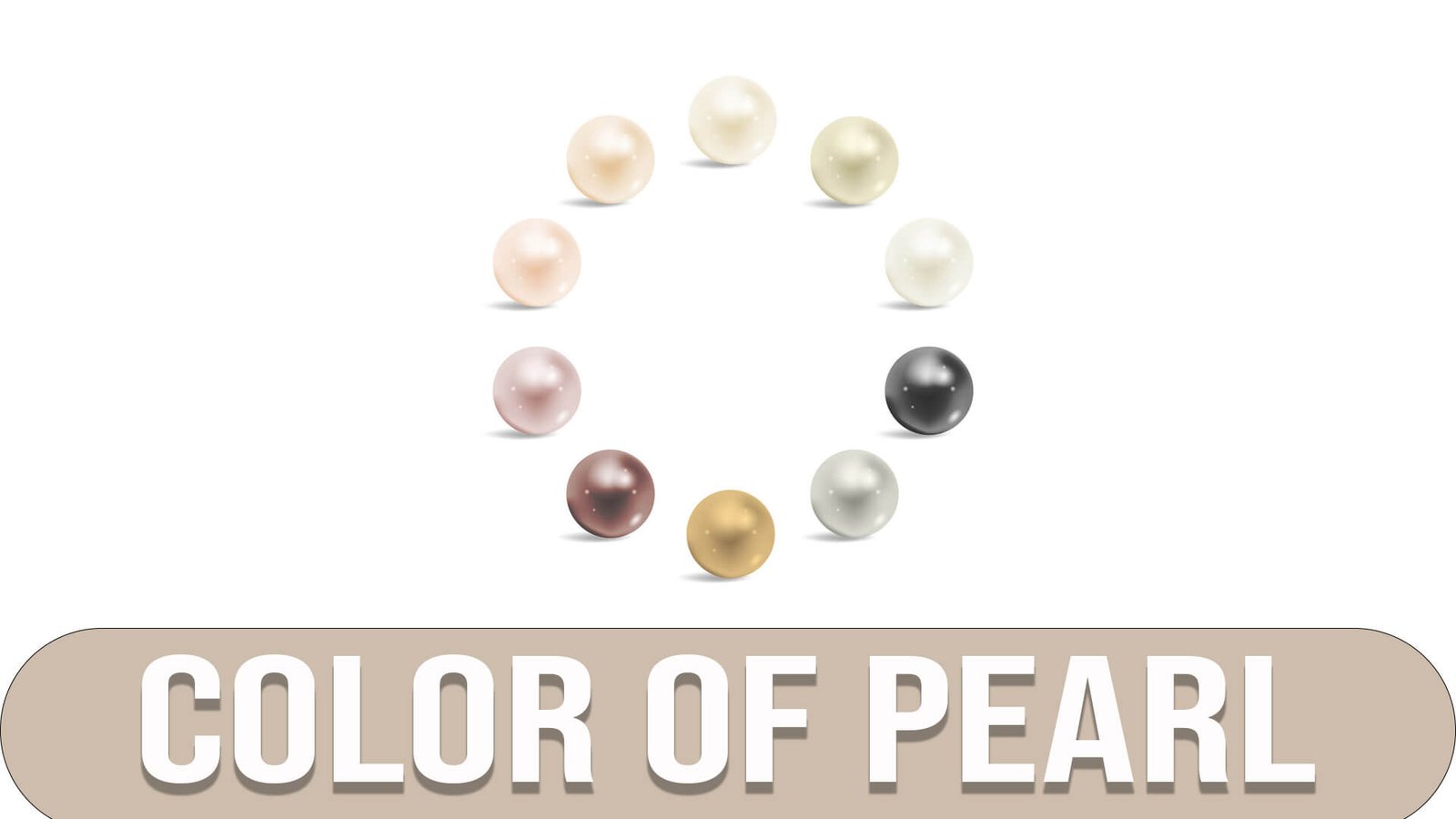
June birthstones are known for their captivating colors, each possessing a unique charm. The first gemstone is the luminous pearl. Renowned for its timeless elegance, pearls showcase a soft and lustrous sheen. These iridescent gems come in various shades ranging from classic white to creamy pink, gray, and even black, adding a touch of sophistication to any piece of jewelry.
Pearl Jewelry
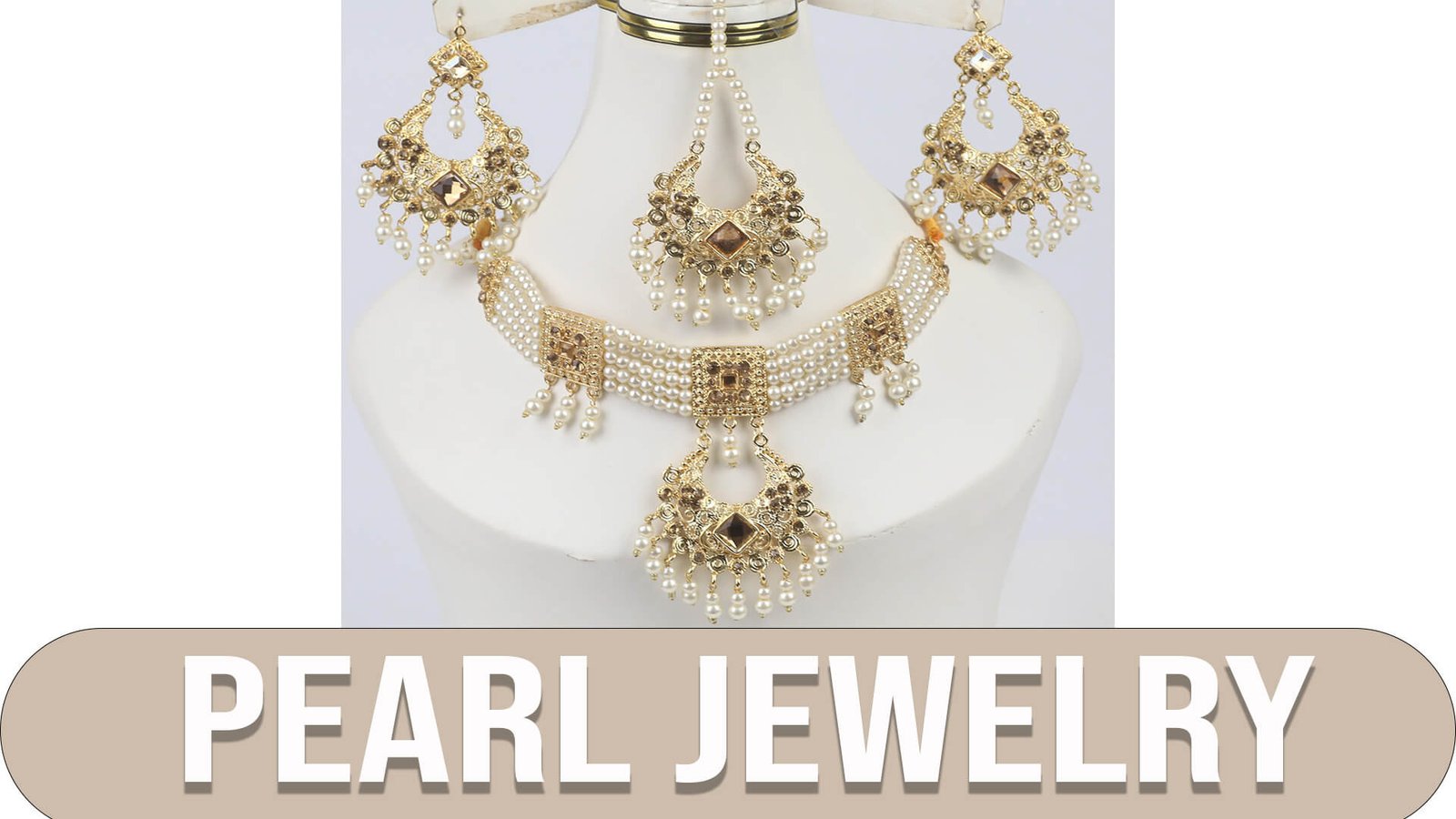
Of course, pearl creates magnificent jewelry. Natural pearls are rare, making it challenging to find them on the open market without spending much money. If genuine pearls are available, they won’t be perfectly round. They are frequently slightly off-around due to their natural development. One of life’s great privileges is to possess a natural pearl that is also spherical. You can use pearls in jewelry like rings, earrings, pendants, necklaces, bracelets, charms, and stick pins.
Pearl Care and Cleaning
Pearls are a relatively soft gem and need specific. To avoid scratching, store them apart from metal and gemstone jewelry. Never store your pearl birthstones in a plastic bag for storage because plastic can release chemicals that can harm the stone’s surface. Always use cosmetics, hair products, and perfume before donning pearl jewelry. Use a soft, wet towel to clean your June birthstone, ideally after each time the pearls are worn.
Cost of Pearls
According to characteristics including kind, size, quality, and provenance, pearls’ average price varies. Natural pearls are exceedingly rare and expensive, costing anything from tens of thousands to millions of dollars. Depending on the kind (Akoya, freshwater, Tahitian, or South Sea), and quality, cultured pearls, which are more widespread and economical, can range in price from $50 to $500 per strand. The least expensive pearl alternatives are imitations, which can cost between a few and tens of dollars per strand. Market circumstances and seller reputation affect prices. Consult respected jewelers, pearl dealers, or online markets for accurate prices.
June Birthstone: Alexandrite
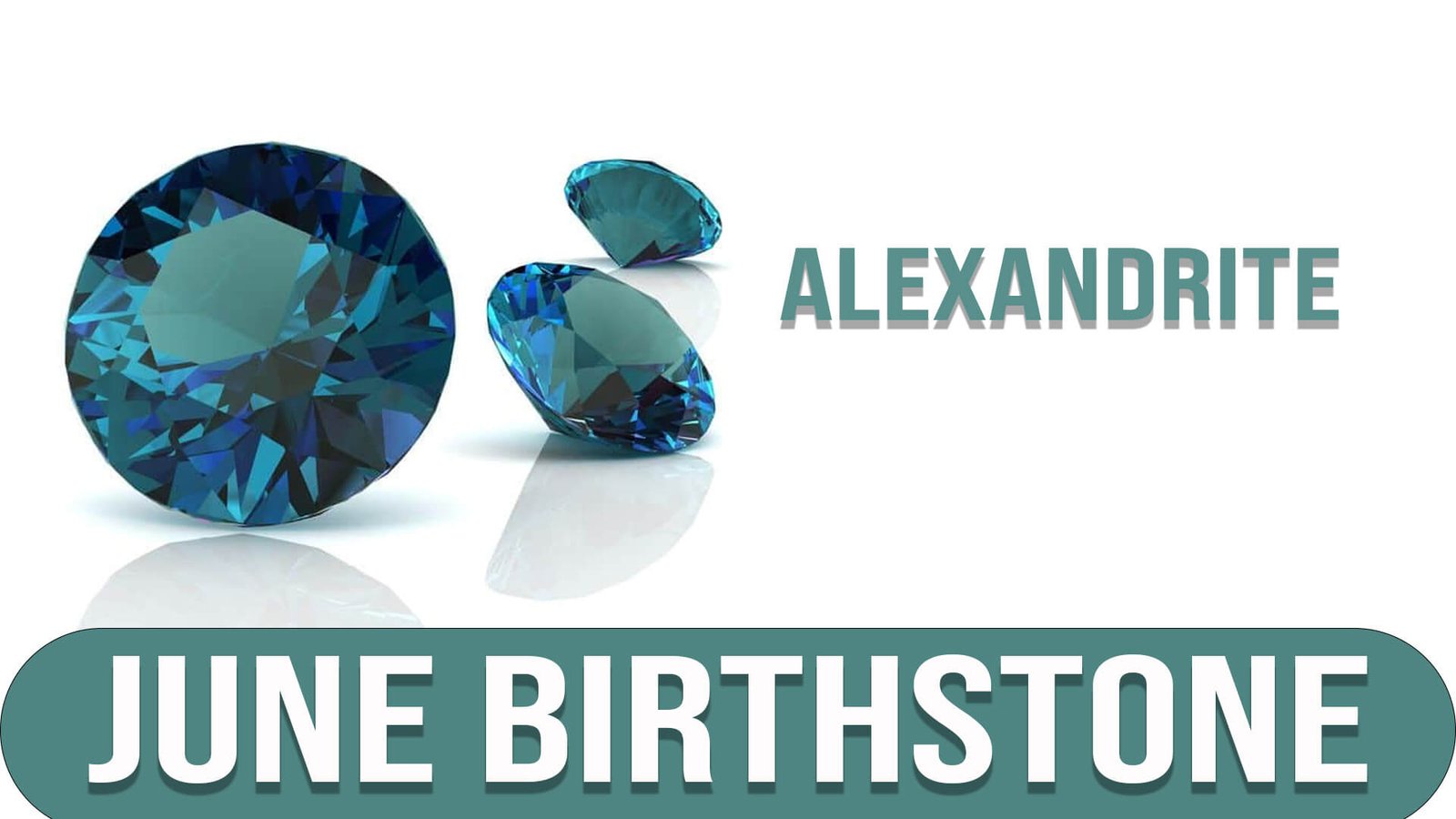
Alexandrite is a beautiful, uncommon gemstone valued for its extraordinary capacity to change color. It is a member of the mineral family chrysoberyl and is renowned for its ability to display various colors under various lighting situations. Alexandrite often appears green or bluish-green under daytime or fluorescent lighting.
However, it experiences a fantastic transformation and changes to colors of crimson or purplish-red when seen in incandescent or candlelight. Pleochroism is an effective color change that distinguishes alexandrite from other gemstones and increases attractiveness. Due to its scarcity, alexandrite is highly prized and linked to traits like flexibility, equilibrium, and joy. Fine-quality natural alexandrite is extremely rare, which makes it prized by collectors and gemstone lovers worldwide.
History of Alexandrite
- Alexandrite was first discovered in 1834 in the Ural Mountains of Russia. It was named after the young Russian tsar Alexander II.
- Initially, alexandrite was mistaken for an emerald due to its green color. However, its unique color-changing property was later revealed.
- The gemstone gained popularity in Russia and became known as the country’s national gem. It was highly valued for its rarity and beautiful color-changing nature.
- The source of alexandrite, the mines in Russia’s Ural Mountains, eventually depleted, making high-quality Russian alexandrite extremely rare and valuable.
- In the early 20th century, new alexandrite deposits were discovered in Sri Lanka (formerly Ceylon) and later in Brazil, Madagascar, Tanzania, and other countries. These new sources helped increase the availability of alexandrite in the market.
- Alexandrite’s popularity soared in the late 19th and early 20th centuries, especially during the Art Nouveau and Edwardian eras. Jewelry designers favored it for its unique color-changing properties, adding a mystique touch to their creations.
- During the Russian Revolution and subsequent political upheavals, the supply of Russian alexandrite significantly declined, making it even more valuable and sought after by collectors.
- Technological advances made synthetic alexandrite, possessing the same chemical composition and color-changing properties as natural alexandrite, available in the mid-20th century.
- Today, alexandrite continues to be highly valued and remains one of the world’s most sought-after and rare gemstones. Fine-quality natural alexandrite, especially from Russian sources, commands a premium price in the market. It is treasured for its captivating color change from green to red or purplish-red and is considered a symbol of luxury, rarity, and elegance.
Where is Alexandrite Found?
After the magnificent Ural Mountain deposits were exhausted via mining, Brazil, Sri Lanka, and East Africa currently supply most of the world’s alexandrite. Some fine-quality stones can be found in the more recent dumps, although many have muddier colors and fewer exact color changes than the Russian alexandrites from the 19th century. The price of fine-quality alexandrite makes it one of the more expensive colored gems due to its rarity, particularly in bigger sizes.
Meaning and Symbolism of Alexandrite

The June birthstone, alexandrite, is a gemstone of great rarity and intrigue, carrying deep meaning and symbolism. Its remarkable color-changing property sets Alexandrite apart, making it a highly prized and sought-after gem.
The color-changing nature of Alexandrite holds profound symbolism. It represents duality and balance as it transitions from shades of green in daylight to hues of red or purplish-red under incandescent light. This remarkable phenomenon symbolizes adaptability and the ability to embrace change. Alexandrite encourages individuals to navigate life’s transitions gracefully, reminding us to find harmony amidst contrasting situations.
Additionally, alexandrite is associated with intuition, creativity, and spiritual growth. Its ability to reflect different colors depending on the light source reflects one’s inner truth and the multi-faceted nature of the human experience. It encourages individuals to explore their emotions, expand their consciousness, and develop a deeper understanding of themselves and their world.
In some cultures, alexandrite is a stone of good fortune and prosperity. It attracts abundance and success while warding off negative energies. Alexandrite’s rarity and exceptional beauty have also made it a symbol of luxury and elegance.
Furthermore, alexandrite is often associated with love and romance. Its dual nature represents the balance between masculine and feminine energies, making it a stone that promotes harmony and unity in relationships. It strengthens emotional bonds, enhances passion, and brings joy and vitality to love connections.
In summary, the meaning and symbolism of Alexandrite revolve around adaptability, balance, intuition, creativity, good fortune, love, and spiritual growth. This stunning gemstone reminds us of the ever-changing nature of life and the importance of embracing transformation with grace and resilience. Its beauty and rarity make it a cherished symbol of personal and emotional growth and a unique and treasured birthstone for those born in June.
Properties of Alexandrite
A beautiful and uncommon gemstone called alexandrite has unique physical characteristics that add to its attractiveness. The most intriguing quality of the chrysoberyl mineral variant known as alexandrite is its extraordinary capacity for color change. It appears green or bluish-green in daytime or fluorescent illumination and changes to red or purplish-red under incandescent light. Pleochroism is a phenomenon that distinguishes alexandrite and draws attention to it.
Alexandrite is ordinarily transparent to translucent and has a vitreous to adamantine luster. With a Mohs hardness of 8.5, it is a durable gemstone that you may use in various jewelry applications. Its ability to absorb specific light wavelengths and the presence of chromium are the leading causes of its color change. Alexandrite is highly prized and sought after by gemstone enthusiasts and collectors worldwide due to its unique physical characteristics, particularly its captivating color-changing ability.
Color of Alexandrite
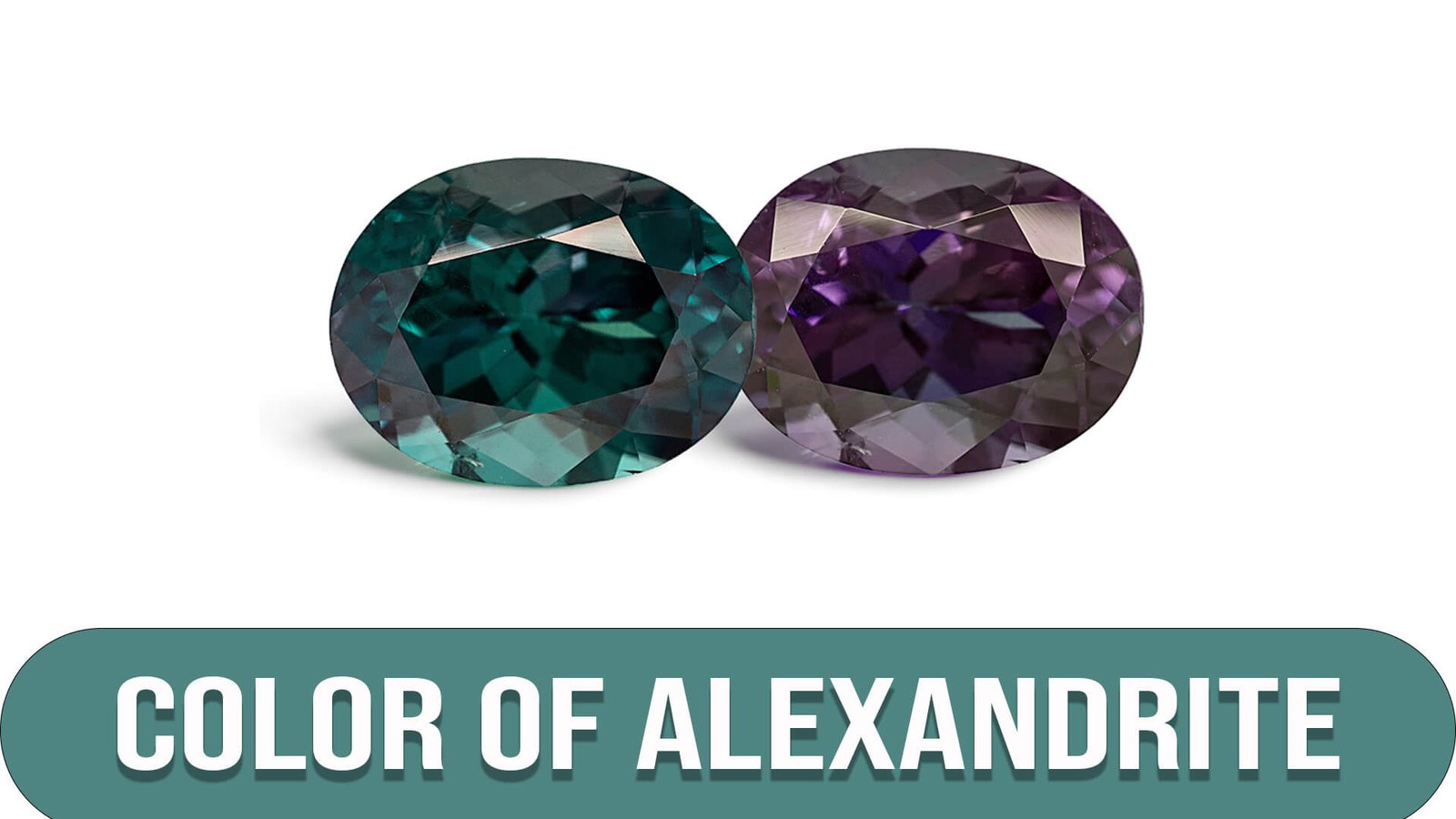
Another gemstone associated with June is alexandrite, renowned for its mesmerizing color-changing properties. Alexandrite displays a fascinating phenomenon known as pleochroism, exhibiting different hues depending on the lighting conditions. This gemstone can transition from a vibrant green or bluish-green in daylight to a rich red or purplish-red under incandescent light, creating a fascinating and rare spectacle.
Alexandrite Jewelry

Rare and typically found in stones weighing less than three carats, alexandrite. The owner of a stone frequently requests custom-made alexandrite jewelry. Selling ready-to-wear alexandrite jewelry is uncommon. Rings, earrings, pendants, necklaces, bracelets, charms, and stick pins are just a few of the jewelry items that can be made from alexandrite.
Alexandrite Care and Cleaning
It lacks cleavage, which can fracture under stress, and is incredibly strong. This qualifies it as a good option for rings and other mountings that are regularly worn. An Alexandrite engagement ring would be a special present for a June baby bride. While cleaning your June birthstone with warm, soapy water is ideal, ultrasonic and steam cleaners are typically as safe.
Cost of Alexandrite
Alexandrite is a rare and expensive gemstone prized for its extraordinary capacity to change color. Based on variables such as size, quality, color shift intensity, clarity, and origin, alexandrite’s average price can vary considerably. The average price range for alexandrite starts at about $1,200 per carat for lesser, lower-quality stones as of my knowledge cutoff in March 2023. Price ranges between $5,000 and $15,000 per carat can be seen for fine quality alexandrites with dynamic color change and exceptional clarity. The price per carat for larger, premium alexandrites might surpass $20,000 in some cases.
It’s crucial to remember that alexandrite costs more than other gemstones because of how rare and desirable it is. For the most up-to-date and accurate pricing information, speaking with reputable gemstone dealers, jewelers, or internet marketplaces is advised. Prices can vary significantly based on the unique qualities of each stone.
June Birthstone: Moonstone

The alluring gemstone known as moonstone is prized for its ethereal beauty and attractive light. It is a type of feldspar and is well known for its adularescence, a fluttering dance of light that gives its surface a shimmering appearance. “moonstone” refers to the stone’s likeness to the moon’s gentle, radiant glow.
Although it can also appear in peach, grey, and blue shades, it is often in milky white or translucent tones. Moonstone is well known for its connections to intuition, feminine energy, and emotional healing. It promotes spiritual development, inner balance, and harmony. Moonstone has been prized by many cultures throughout history and utilized in jewelry and decorative goods. Its mesmerizing charm still draws in people who value its mysterious and fascinating aspects.
History of Moonstone
- Moonstone has a long and rich history that dates back thousands of years. It has been valued as a gemstone in various cultures and civilizations.
- Ancient Romans believed moonstone was formed from solidified moonlight, giving them their ethereal glow and magical properties.
- In ancient India, the moonstone was regarded as sacred and associated with the moon god Chandra. People thought it also brought good fortune, love, and protection to its wearer.
- Moonstone has been used in jewelry for centuries, particularly during the Art Nouveau period in the late 19th and early 20th centuries. It was favored by jewelry designers who embraced its mystical charm and unique sheen.
- The popularity of moonstones surged during the 1960s and 1970s due to the hippie movement and its connection to spirituality, mysticism, and the natural world.
- Historically known as Ceylon, Sri Lanka has been a significant source of high-quality moonstones. The country is renowned for producing some of the finest specimens with exceptional adularescence.
- In recent years, moonstone has experienced a resurgence in popularity as more people appreciate its metaphysical properties and unique beauty. It is often used in bohemian and contemporary jewelry designs.
- Moonstone is associated with feminine energy, intuition, and emotional healing. It also promotes harmony, balance, and inner peace.
- Today, moonstone remains a highly valued and cherished gemstone, particularly as the birthstone for June. It is admired for its iridescent glow, which resembles the moon’s luminous light and continues to captivate jewelry enthusiasts worldwide.
Where is Moonstone Found?
You can locate Moonstones located in many different locations. This covers regions of the US, such as New Mexico, North Carolina, and Virginia. India and Sri Lanka are the two most significant birthstone-producing countries globally, although other sources include Brazil, Madagascar, Myanmar, Tanzania, India, and Sri Lanka.
Meaning and Symbolism of Moonstone
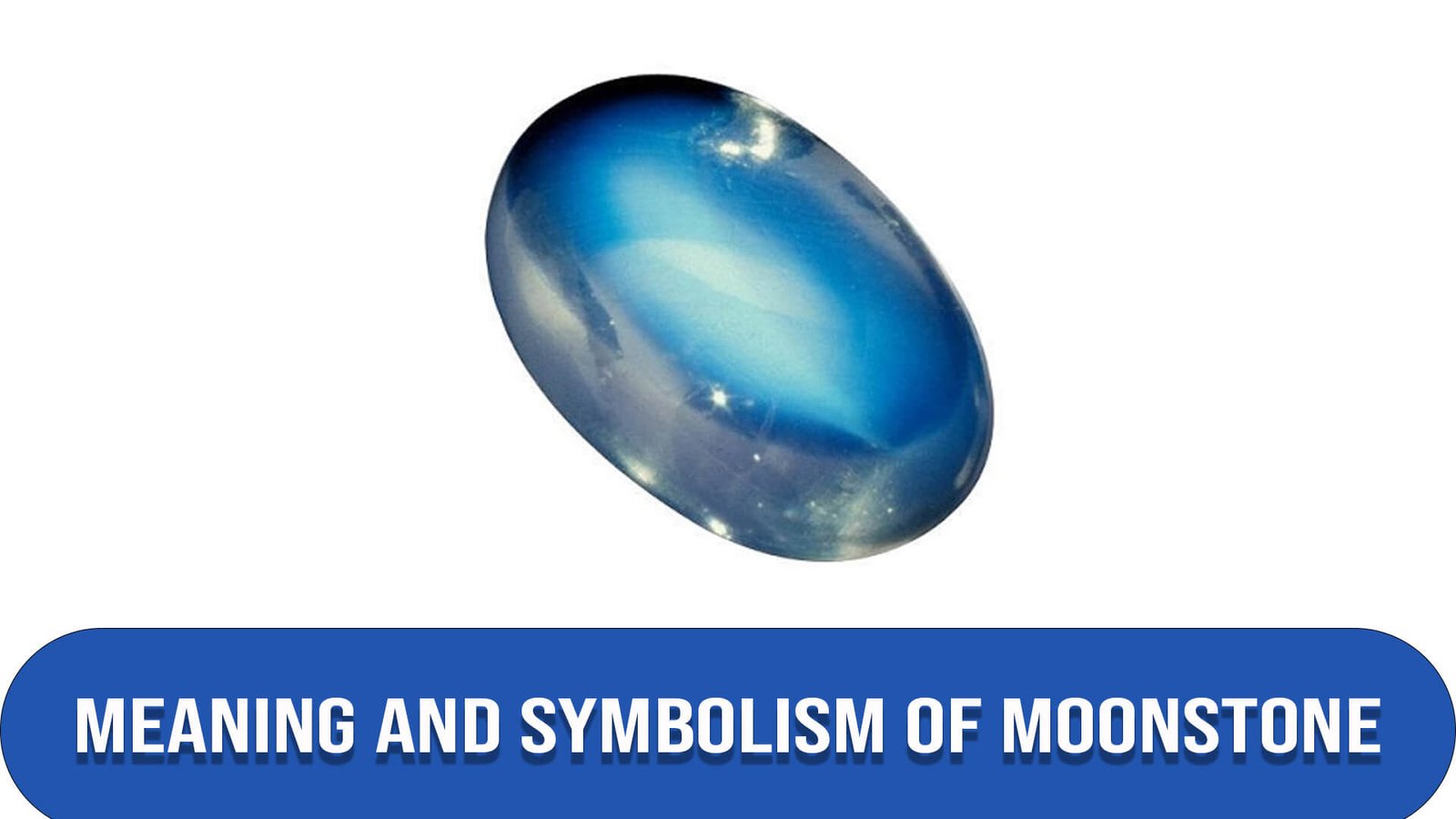
The June birthstone, moonstone, is steeped in captivating meaning and symbolism. As its name suggests, moonstone is deeply connected to the energy and charisma of the moon, carrying with it a sense of enchantment and wonder.
One of the key symbols associated with moonstone is its connection to the divine feminine and the cycles of life. Moonstone reflects the fluctuation of life’s phases just as the moon waxes and wanes. It enhances intuition and psychic abilities, helping individuals attune to their inner wisdom and navigate the ever-changing tides of life. Moonstone is often seen as a talisman for women, promoting fertility, hormonal balance, and emotional well-being.
Moonstone’s ethereal glow, known as adularescence, adds to its symbolism. The shimmering play of light within the stone is reminiscent of moonlight reflecting on calm water, evoking a sense of tranquility and serenity. It is a stone of emotional healing, offering comfort and soothing energy during stress or emotional upheaval.
In various cultures, the moonstone is revered as a sacred stone with spiritual significance. It is associated with dreams, visions, and the subconscious realm. Moonstone enhances spiritual awareness, intuition, and connection to higher realms. It is often used in meditation practices to facilitate deep introspection and the exploration of one’s inner self.
Moonstone is also linked to love and romance. It symbolizes passion and sensuality, promoting harmonious relationships and emotional balance. The stone’s gentle and nurturing energy encourages empathy and understanding, fostering open communication and deep connections.
Symbolism:
Overall, the symbolism of the moonstone encompasses femininity, intuition, emotional healing, spiritual growth, and the cyclical nature of life. It invites us to embrace the moon’s mysteries, tap into our inner wisdom, and navigate the transformative journey of self-discovery. As the radiant birthstone for June, the moonstone serves as a reminder of the beauty and power found in embracing our unique phases and the magic within.
Properties of Moonstone
Several significant physical characteristics of the moonstone contribute to its attraction as a rare gemstone. It is a feldspar part of the orthoclase or albite group. The usual luster of moonstone is pearly or vitreous, and it exhibits the distinctive adularescence, a floating play of light brought on by alternating layers of various feldspar minerals. As light can travel through the stone and intensify its ethereal shine, it is often translucent to semi-transparent.
The color of moonstones can vary in purity and intensity from milky white to grey, peach, and even blue. Its Mohs hardness is intermediate, usually between 6 and 6.5, making it more prone to scratching and necessitating acute treatment. Overall, the physical characteristics of the moonstone contribute to its allure and provide it with a distinctive charm.
Color of Moonstone
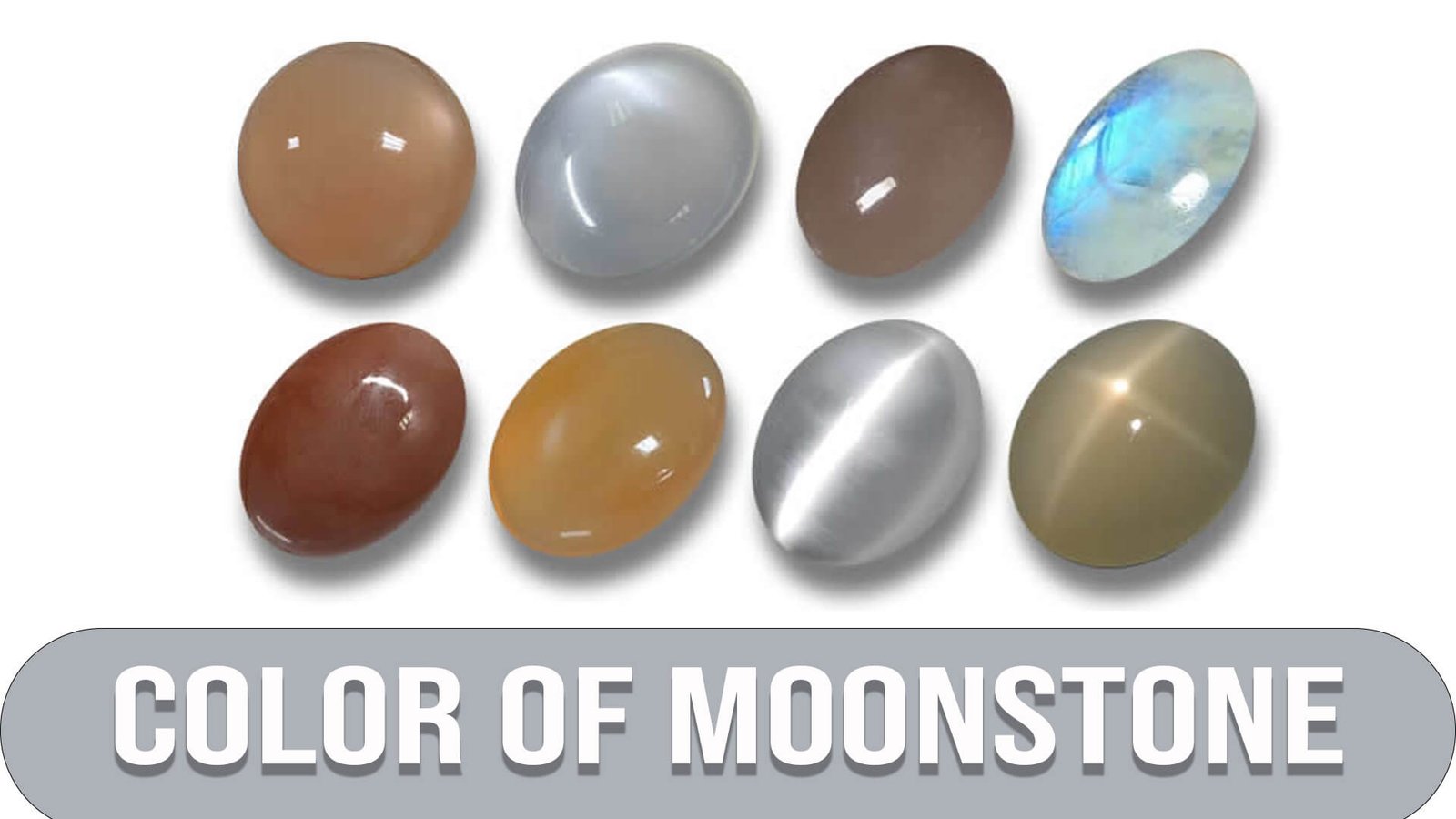
Lastly, the ethereal moonstone is a captivating gemstone associated with June. Moonstone has a soft, milky appearance with a shimmering adularescence that resembles the play of moonlight on water. It is also known for its dreamy glow. You can usually find this stone in pale shades of white, gray, or peach, and its pearly sheen adds an enchanting allure reminiscent of the moon’s radiant glow.
Moonstone Jewelry
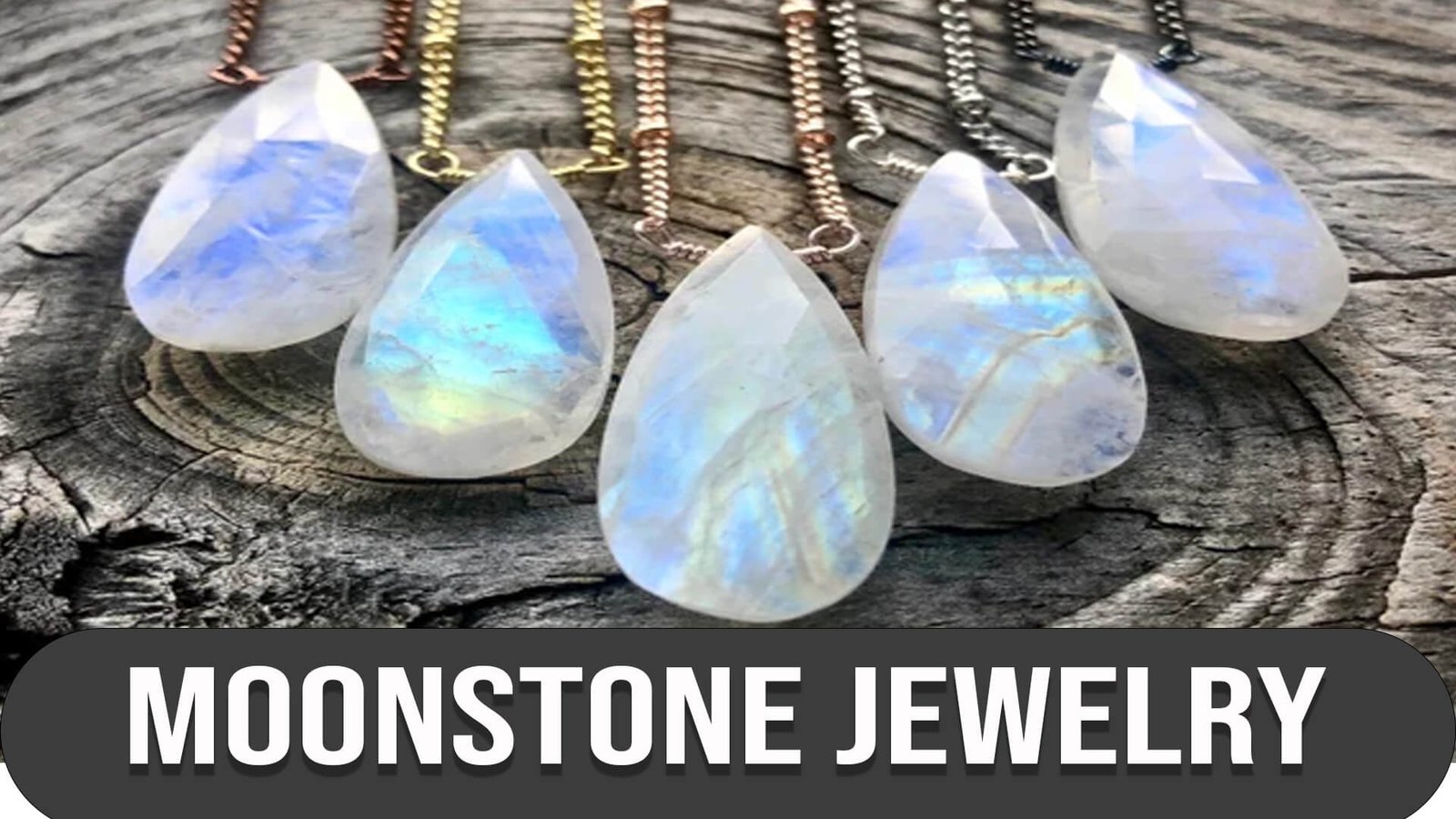
Finding a moonstone cut with facets like other semi-precious stones is relatively uncommon. When cut for jewelry purposes, it is polished as a cabochon. Cabochons lack characteristics and are spherical. View the illustration of the earrings up top. You can make jewelry using moonstones, including rings, earrings, pendants, necklaces, bracelets, charms, and stick pins.
Moonstone Care and Cleaning
Moonstone has little toughness. When subjected to intense heat, it could crack. Therefore, you shouldn’t use an ultrasonic or steam cleaner to clean your moonstone. Cleansing is best done with warm, soapy water and a soft brush.
Cost of Moonstone
A moonstone’s average price can change depending on several elements, such as its quality, size, cut, and overall aesthetic appeal. As far as I’m aware, a moonstone typically costs between $10 to $100 per carat, with a cutoff in September 2021. Meanwhile, Rare and extraordinary moonstones can fetch values far above this range if they have excellent clarity, vibrant color, and big sizes. It’s crucial to remember that gemstone costs might change over time due to market supply and demand. Consult trustworthy gemstone dealers, jewelers, or internet marketplaces for the most recent and accurate information on moonstone pricing.
Final Thoughts
In conclusion, June birthstones hold a tremendous significance and captivating beauty that make them cherished among those born this month. Each gemstone possesses unique characteristics and symbolism, whether it is the enchanting allure of pearls or the mesmerizing hues of alexandrite and moonstone. June birthstones are sources of personal adornment and tokens of good fortune, protection, and emotional well-being. They are tangible reminders of the month’s warm embrace, its association with love and marriage, and the beginning of summer. As we embrace the allure and mystique of June birthstones, we can appreciate the richness they bring to our lives and celebrate the extraordinary diversity of the natural world.
Read More: January Birthstone, Febuary Birthstone, March Birthstone, April Birthstone, May Birthstone, July Birthstone, August Birthstone, September Birthstone, October Birthstone, November Birthstone, December Birthstone





